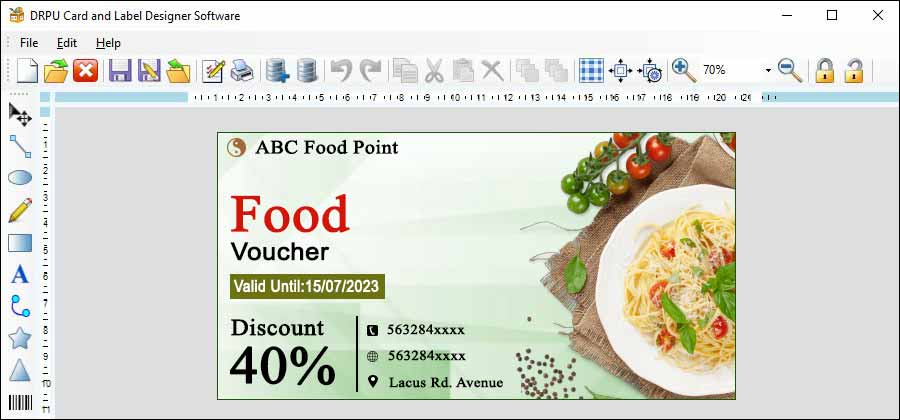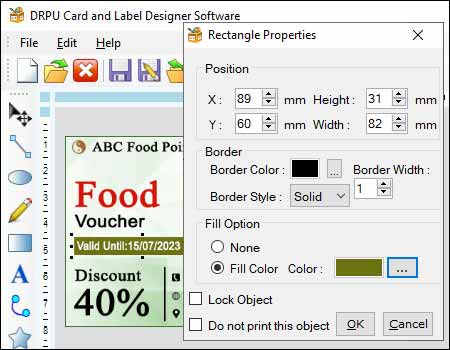Label Designer Software and Some Popular Options
There are many label designer software options available on the market today, each with its own set of features and capabilities. Some of the most popular label designer software options and explore their key features and benefits:-

-
Avery Design & Print
Avery Design & Print is a free label designer software that is widely used by individuals and businesses. It allows users to create and print custom labels, cards, and tags using pre-designed templates or by creating their own designs from scratch. This software has a user-friendly interface that makes it easy to add text, images, and graphics to labels. It also allows users to import data from Excel spreadsheets or other sources, which can save time when creating multiple labels with similar information. Avery Design & Print is available for both Windows and Mac operating systems.
-
Bartender
Bartender is a label designer software that is popular among businesses of all sizes. It allows users to create and print professional-looking labels for various applications, including product labeling, asset tracking, and more. This software offers a wide range of design tools and templates, as well as advanced features such as database integration and automation. Bartender also supports a variety of label printers, including thermal transfer and direct thermal printers. This software is available for both Windows and Mac operating systems.
-
NiceLabel
NiceLabel is a label designer software that is known for its powerful design tools and easy-to-use interface. It allows users to create custom labels for various applications, including product labeling, compliance labeling, and more. NiceLabel offers a variety of design templates and tools, as well as advanced features such as database integration, barcode generation, and serialization. This software is available for both Windows and Mac operating systems.
-
ZebraDesigner
ZebraDesigner is a label designer software that is specifically designed for use with Zebra label printers. It allows users to create and print high-quality labels for various applications, including product labeling, shipping labels, and more. ZebraDesigner offers a variety of design tools and templates, as well as advanced features such as database integration and automation. This software is available for both Windows and Mac operating systems.
-
LabelJoy
LabelJoy is a label designer software that is known for its versatility and ease of use. It allows users to create and print custom labels for various applications, including product labeling, barcoding, and more. LabelJoy offers a wide range of design tools and templates, as well as advanced features such as database integration, barcode generation, and serialization. This software is available for both Windows and Mac operating systems.
-
DYMO Label Software
DYMO Label Software is a label designer software that is designed specifically for use with DYMO label printers. It allows users to create and print custom labels for various applications, including shipping labels, barcode labels, and more. DYMO Label Software offers a variety of design tools and templates, as well as advanced features such as database integration and automation. This software is available for both Windows and Mac operating systems.
-
DesignPro
DesignPro is a label designer software that is widely used by individuals and businesses. It allows users to create and print custom labels, cards, and tags using pre-designed templates or by creating their own designs from scratch. This software has a user-friendly interface that makes it easy to add text, images, and graphics to labels.
Create Custom Label Designs Using Label Designer Software
Creating custom label designs using label designer software is a simple process that involves a few key steps such as:-

- Step 1: Choose
Your Label Stock
The first step in creating a custom label design is to choose your label stock. The label stock is the physical material on which your label will be printed. There are many different types of label stock available, including paper, vinyl, polyester, and more. You should choose a label stock that is appropriate for the application you have in mind, taking into account factors such as durability, moisture resistance, and adhesive properties.
- Step 2: Choose Your
Label Designer Software
The next step in creating a custom label design is to choose your label designer software. There are many different label designer software programs available, each with their own set of features and capabilities. When choosing a label designer software, consider factors such as ease of use, design capabilities, printing capabilities, and barcode and QR code generation.
- Step 3: Set up
Your Label Template
The next step in creating a custom label design is to set up your label template. The label template is the basic layout of your label, including the size, shape, and positioning of elements such as text and graphics. Most label designer software programs come with a range of pre-designed templates that you can customize to suit your needs. Alternatively, you can create your own custom template from scratch.
- Step 4: Add Text
and Graphics
Once you have set up your label template, the next step is to add text and graphics. Most label designer software programs come with a range of pre-designed graphic elements that you can use in your label design, such as borders, shapes, and icons. You can also import your own graphics or logos into the software. To add text, simply select the text tool and type in your desired text. You can customize the font, size, and color of your text using the software's formatting tools.
- Step 5: Customize
Your Design
After adding your text and graphics, you can customize your design further by adjusting the layout, colors, and other design elements. Most label designer software programs come with a range of customization tools, such as alignment tools, color pickers, and image editing tools, that allow you to fine-tune your design until it looks exactly the way you want it to.
- Step 6: Preview
and Print Your Label
Once you are happy with your label design, the final step is to preview and print your label. Most label designer software programs allow you to preview your label design on-screen before printing, giving you the opportunity to check for any errors or design issues. When you are ready to print, simply select your printer and print settings, and click the print button.
Conclusion: Creating custom label designs using label designer software is a simple process that involves a few key steps. By choosing the right label stock, label designer software, and customization tools, you can create high-quality label designs that meet your specific needs and requirements.